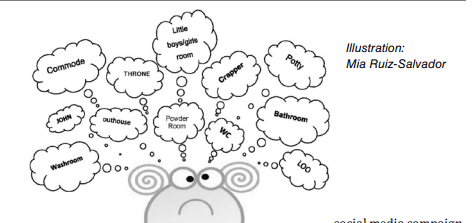Facilitiesnet
Dan Hounsel, Editor-in-Chief
Here’s how to rethink products and projects to meet evolving user expectations.
Restrooms and plumbing systems have rarely been under as much scrutiny as they are right now. Beyond long-standing organizational goals related to water conservation and user comfort, maintenance and engineering managers now must incorporate occupant health concerns related to the threat of COVID-19 transmission into plans to upgrade restrooms and plumbing systems.
For manufacturers of plumbing and restroom products, the renewed focus on restrooms means, in part, that they are fielding more questions from managers in the process of specifying products and planning upgrades.
“There has never been a greater focus on overall facility hygiene,” says Scott Hager with Ferguson Enterprises. “As a distributor with a national scope, we see a lot of activity around retrofitting conventional washrooms to touchless. This includes touchless flush valves, faucets, skincare and towel dispensers. Additionally, many facilities managers are installing foot or arm door hardware for a completely hands-free experience.”
The volume of traffic moving through these areas compounds the complexity of the challenges facing managers.
“As one of the most visited spaces in any commercial building, restrooms can be a breeding ground for germs and bacteria,” says Mark Lawinger with Sloan Valve Co. “When people enter a public restroom now, the last thing they want to do is touch a surface such as manual faucet or flushometer handles.”
Expectations and demands
Whatever building occupants and visitors once expected of restrooms, everything is different in the COVID-19 era.
“The spread of COVID has accelerated widespread demand for touchless restroom fixtures, making the use of levers, handles and buttons somewhat outdated,” says Will Haas with Bradley Corp. “This old technology is especially being shunned by end users who are averse to touching any surfaces — faucets, soap dispensers, hand dryers, handles, doors, toilet flushers, etc. — in restrooms.”
The specific challenges of non-residential restrooms can be of particular concern to users.
“There is more concern about the spread of germs and viruses through fixtures in the restroom, especially in commercial applications where toilets do not have a seat cover,” says Matt Voorhees of Niagara Corp. “Touchless, sensored fixtures are already immensely popular, but building managers are now considering fixtures made with antimicrobial materials, as well.”
As concern about COVID-19 continues among the general public, managers can expect to field more probing questions from occupants about infection prevention measures in restrooms.
“There’s a growing shift for using natural and sustainable materials that are easy to clean and disinfect while being smooth and non-porous with seamless construction, helping to prevent bacteria, mold, mildew, and delamination accumulation,” Haas says. “These types of cast-formed materials are very easy to clean, maintain, repair and renew.”
Planning issues
With these expectations and concerns about restrooms and plumbing systems in mind, managers can begin to lay out projects to improve restroom hygiene. One early issue to determine is whether the project under discussion is a retrofit or an upgrade.
“Commercial restroom retrofits are actually the easy part of the process to upgrade fixtures from manual to touch-free, as many sensor-operated fixtures can be installed in just a matter of minutes,” Lawinger says. “The challenging part when upgrading a restroom, or specifically re-opening your facility after several months, is managing the risks that are associated with prolonged system inactivity.
“Water that sits in plumbing lines for extended periods of time becomes stagnant, which could lead to elevated levels of lead and copper. This water also has the potential to contain little to no residual disinfectant, leading to elevated levels of bacteria and other microbiological contaminants.”
Low occupancy in buildings makes it easier for contractors and in-house maintenance staff to access areas being upgraded.
“It is a great time to plan an upgrade,” Hager says. “In most major metropolitan markets, many people continue to work remotely, and office space remains empty, making upgrades less disruptive to the workday. At the same time, there is an enormous demand in our industry that can stretch lead times and put strains on the supply chain.”
Also working against managers planning upgrades is the most obvious issue — the threat of COVID-19 infection.
“In general, scheduling has been more difficult due to COVID-related restrictions and shutdowns, especially in hard-hit areas,” Haas says. “Keep in mind that restrooms are often smaller with tight spaces, so it’s critical to schedule enough time in between contractors to help with social distancing and ventilation.”
Managers weighing the timing of restroom or plumbing system upgrades in the near future also might be wise to consider the impact the pandemic will have on the demand for products and contractor services.
“Labor shortages, shipping, trucking and manufacturing limitations are present due to the pandemic, causing product delivery and availability to be delayed, depending on the manufacturer,” Vorhees says. “Many building managers are concerned that once the pandemic fades, manufacturers won’t be able to keep up with the demand to produce products when they need to order it for renovations.
“We’re seeing indications that once the pandemic goes away, there will be a high demand for building renovations. As a result, we’re working to help architects, builders, and building engineers plan for renovations for when this construction begins and are finding demand for ideas on toilets that conserve water and require less maintenance.”
With user expectations and project timing in mind, managers can move on to the critical question of which products to select for installation in the upgraded space. Undoubtedly, the restroom technology getting the most scrutiny these days allows users to minimize contact with surfaces potentially harboring germs and bacteria.
“Touchless fixtures have gained a lot of traction in restrooms,” says Haas. “Not only are they more hygienic and convenient. They are easier to clean, maintain and service. In recent years, the performance and reliability of touchless fixtures has greatly improved with advanced sensing technology, which eliminates the irritation of false and spotty activations.
For managers with organizations that have bottom-line constraints, manufacturers have options.
“If sensor devices are not in the budget, we would recommend retrofitting to antimicrobial coated handles for faucets and flush valves,” Danowski says. “Manual faucets could also be retrofit using larger wrist-blade-type handles that may be operated without having to grasp the faucet handle with your hands to operate.”
While improved hygiene tops the priority list for many upgrades, facilities are still pursuing goals related to sustainability and, in particular, water conservation.
“Because many property owners and managers have had to tighten their belts in this economy, many are more aware of how water-efficient toilet fixtures can help save money on their water bills,” Voorhees says, adding that according to the U.S. Environmental Protection Agency (EPA), restroom fixtures account for 37 percent of total water use in an average building. “In addition, large buildings use 22,000 gallons per building per day, according to the EPA. Newer models of toilets are more efficient, allowing for a reduction of water and utility bills that can reduce costs.”
Managers and their organizations also can benefit from additional advances in plumbing product technology.
“Maintenance teams are seeing real, measurable results from adding smart, connected plumbing products to their restrooms,” says Dan Danowksi with Zurn. “Using sensors, these products collect data and transmit it to a secure portal where it is analyzed and can be viewed. Reduced maintenance, operational costs and water usage are just some of the benefits achieved.”
Adds Lawinger, “Thanks to innovations like the Internet of Things and Bluetooth technology, facility managers are able to effectively monitor their plumbing systems more effectively than ever. With these new technologies, facility maintenance teams can adjust faucet and flushometer settings, monitor usage, and diagnose wirelessly right from their fingertips. Not only do these technological advancements and data diagnostics take the guesswork out of repairs, but they enable facility maintenance teams to save time, lower costs, increase water efficiency and reduce risk.”
Matching needs and products
The ultimate challenge for managers planning restroom and plumbing system upgrades is ensuring installed products and finished projects meet the needs of both organizations and occupants.
“Encouraging handwashing is very important,” Haas says. “So things like putting sinks at appropriate heights, having deeper sinks that are easy to clean, and ensuring sensors are reliable are of utmost concern. Above all, keeping restrooms clean and maintained will go a long way in encouraging people to wash their hands and building a positive image of the facility.”
Finding the sweet spot between organizations and occupants can be difficult, and that is where working with a partner in the planning can help.
“My advice would be to work with a partner that can serve as that trusted advisor to help you find the right products for the right job,” Hager says. “As we return to work, things will be different and the trend will always lean towards cleaner, safer buildings.
“There are products available for virtually every application across a spectrum of price points. Things to consider are standardization for ease of maintenance across sites and product availability from your supplier.”
Dan Hounsell is editor of Facility Maintenance Decisions.



